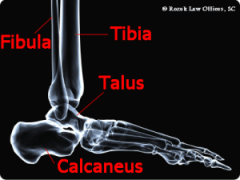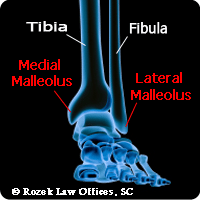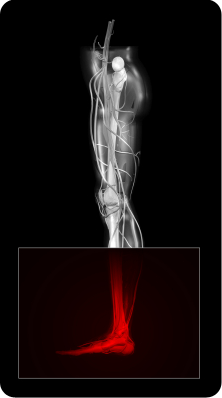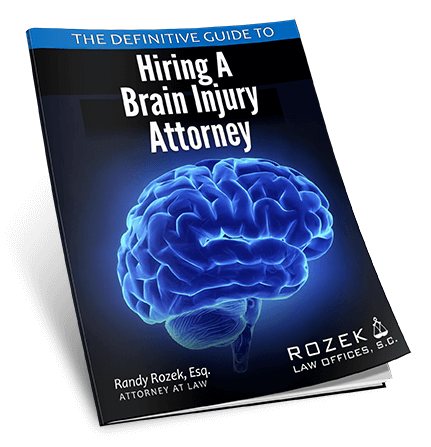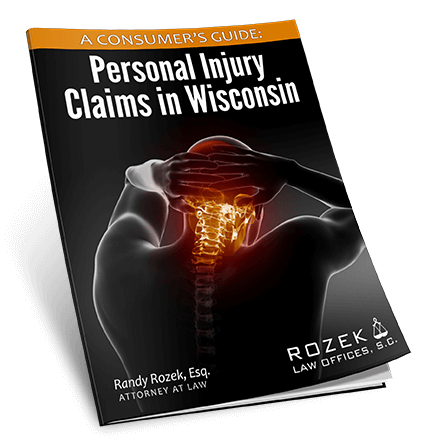Ankle Fracture is one of the most common types of injuries to the ankle. The Ankle Bone (Talus Bone) sits below the two lower leg bones, the shin bone (Tibia Bone) and smaller lower leg bone (Fibula Bone). The Talus Bone rests on top of the heel bone (Calcaneus Bone) and acts as a hinge allowing the foot to move up and down.
All Ankle Fractures are either Complete Ankle Fractures or Incomplete Ankle Fractures . A Complete Ankle Fracture means that the bone is cracked all of the way through the bone. An Incomplete Ankle Fracture means the crack of the bone does not go all of the way through the bone.
Ankle Fracture or Broken Ankle may refer to a fracture of the Talus, Tibia or Fibula. The majority of Talus Fractures are comminuted fractures, meaning the bone breaks into several different smaller pieces.



